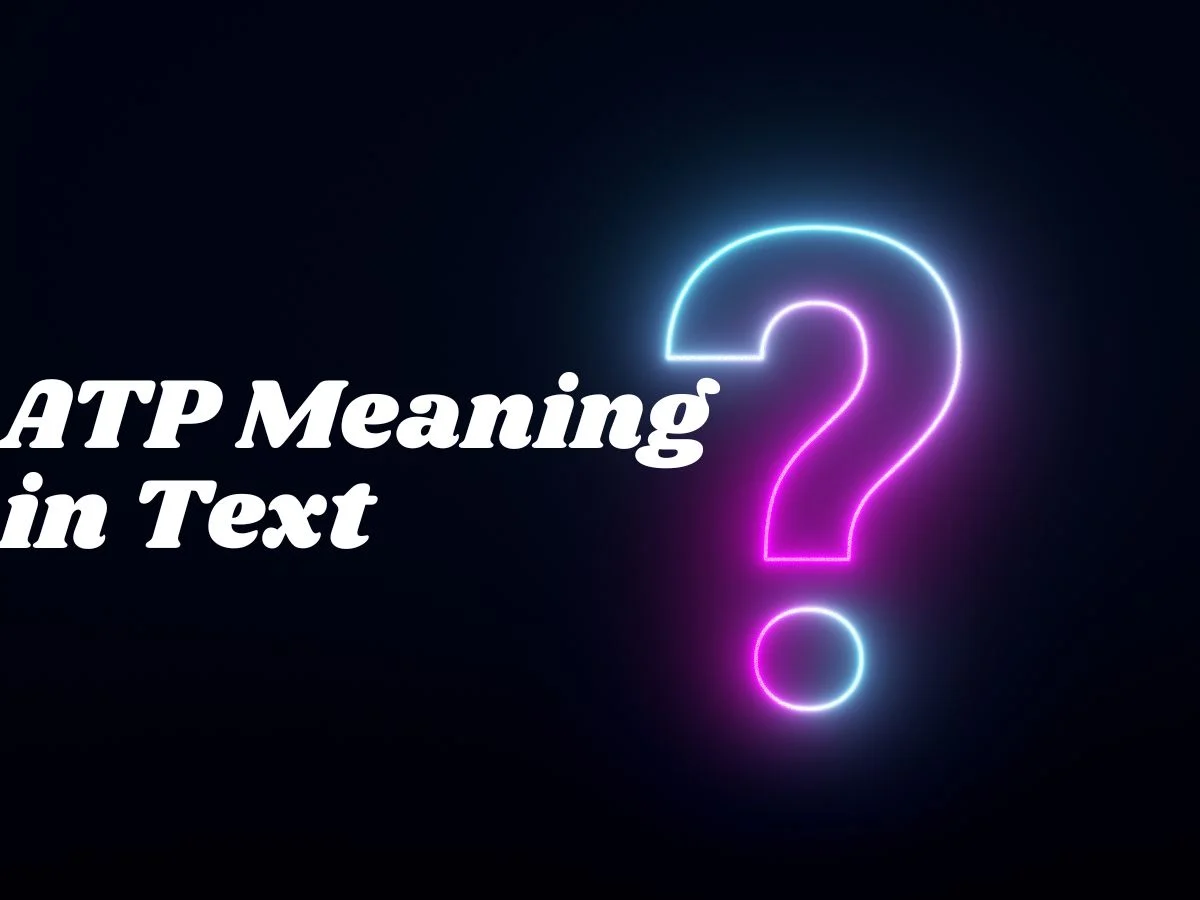In today’s fast-paced digital communication, acronyms and abbreviations have become an essential part of texting and online conversations.
One such acronym that often appears but may leave some confused is ATP.
Whether you stumble upon it in a casual chat, social media post, or even professional messaging, understanding what ATP means can help you decode the message more effectively and avoid misinterpretations.
Knowing acronyms like ATP is important because they reflect evolving language trends and cultural nuances that shape how we communicate.
This article will explore the definition, origins, usage, common misunderstandings, and alternatives to ATP in text, giving you a comprehensive understanding of this abbreviation so you can navigate your digital conversations with confidence.
Definitions & Meaning
ATP in texting commonly stands for “At The Point” or “Answer The Phone.” However, context plays a huge role in determining which meaning fits best. Here are the most frequent interpretations:
- At The Point: Used to indicate someone has reached a particular stage or moment in a discussion or situation. For example, “I’m ATP in my presentation,” meaning the speaker has reached a critical part.
- Answer The Phone: A direct request or reminder to pick up a call, often seen in quick chats. For example, “ATP, it’s urgent!”
In some niche online communities, ATP might have other meanings, but these two are by far the most recognized in texting and instant messaging.
Origins & History
The acronym ATP has roots in internet slang and texting culture that grew as mobile texting and instant messaging became widespread in the early 2000s.
Acronyms like LOL (laugh out loud), BRB (be right back), and BTW (by the way) set the precedent for short forms to speed up communication.
ATP emerged as users sought brief ways to express common phrases during fast conversations.
While not as universally popular as other acronyms, ATP found its place in certain circles because it provides an efficient shorthand for routine expressions, especially in informal settings.
Unlike some acronyms that originated from popular media or cultural phenomena, ATP seems to have evolved organically among users needing quick communication cues, particularly in professional or semi-formal messaging where clarity and brevity are valued.
Usage in Different Contexts
Social Media & Casual Texting
On platforms like Twitter, Instagram, or in casual SMS conversations, ATP is mainly used as “Answer The Phone.”
People use it to urge friends or family to pick up calls when texting might be inconvenient or when immediate response is needed.
For example, “ATP! The delivery guy is outside.”
Sometimes, in group chats or discussions, ATP can mean “At The Point,” indicating a status update or progress in a story or task, e.g., “I’m ATP in the game, almost done.”
Professional & Workplace Communication
In professional texting or chat apps like Slack and Microsoft Teams, ATP might be used less frequently but still shows up occasionally to prompt someone to “Answer The Phone” during urgent situations or meetings.
In formal emails or official communication, the acronym ATP is rarely used, as full phrases are preferred to avoid ambiguity.
Pop Culture & Other Uses
Outside texting, ATP is widely known as a scientific abbreviation for Adenosine Triphosphate, the energy currency in biology.
However, this is unrelated to texting slang but might cause confusion if the context is not clear.
Common Misunderstandings & Clarifications
Because ATP has multiple meanings depending on the context, it’s easy to misunderstand its intent.
For example, if someone texts “ATP now,” it could mean “Answer The Phone now” or “I’m at the point now,” leading to confusion.
Another common misunderstanding arises when people associate ATP solely with the scientific term and assume it’s a technical or niche reference.
To avoid confusion, it’s helpful to consider the conversation context or ask for clarification when unsure about the intended meaning of ATP.
Alternatives & Synonyms
Depending on what ATP means in your conversation, here are some common alternatives:
- For Answer The Phone:
- Pick up
- Answer the call
- Respond to the call
- Call back (if the phone is missed)
- Pick up
- For At The Point:
- At this stage
- At this moment
- Currently
- At the part
- At this stage
Other general texting acronyms related to communication urgency include:
- ASAP (As Soon As Possible)
- FYI (For Your Information)
- BRB (Be Right Back)
Frequently Asked Questions (FAQ)
1. What does ATP mean in texting?
ATP usually means “Answer The Phone” or “At The Point,” depending on the conversation context.
2. Is ATP a common acronym in professional communication?
It’s less common in formal professional communication but can appear in quick chats or instant messaging.
3. Can ATP mean something else?
In texting, those are the main meanings. But ATP is also a well-known biological term for Adenosine Triphosphate, unrelated to texting.
4. How do I know which meaning of ATP applies?
Context is key—look at the conversation topic or ask the sender for clarification.
5. Are there alternatives to ATP?
Yes, you can say “Answer the phone,” “Pick up,” or “At this stage,” depending on your intended meaning.
6. Is ATP used globally?
Its usage varies by region and platform but is mostly found in English-speaking texting culture.
7. Should I use ATP in formal emails?
It’s best to avoid ATP in formal emails to maintain clarity and professionalism.
Conclusion
ATP is a versatile acronym in texting and digital communication, most commonly representing “Answer The Phone” or “At The Point.”
Its use reflects the growing trend of shorthand communication in fast-paced, casual conversations.
However, due to its multiple meanings and potential confusion with scientific terms, understanding the context is essential when encountering ATP.
Whether urging someone to pick up a call or indicating a status update, ATP serves as a useful tool in informal text chats.
Knowing alternatives and when to avoid it in professional settings can help maintain clear and effective communication.
As language and technology evolve, acronyms like ATP remind us of the dynamic nature of how we connect and express ourselves today.









